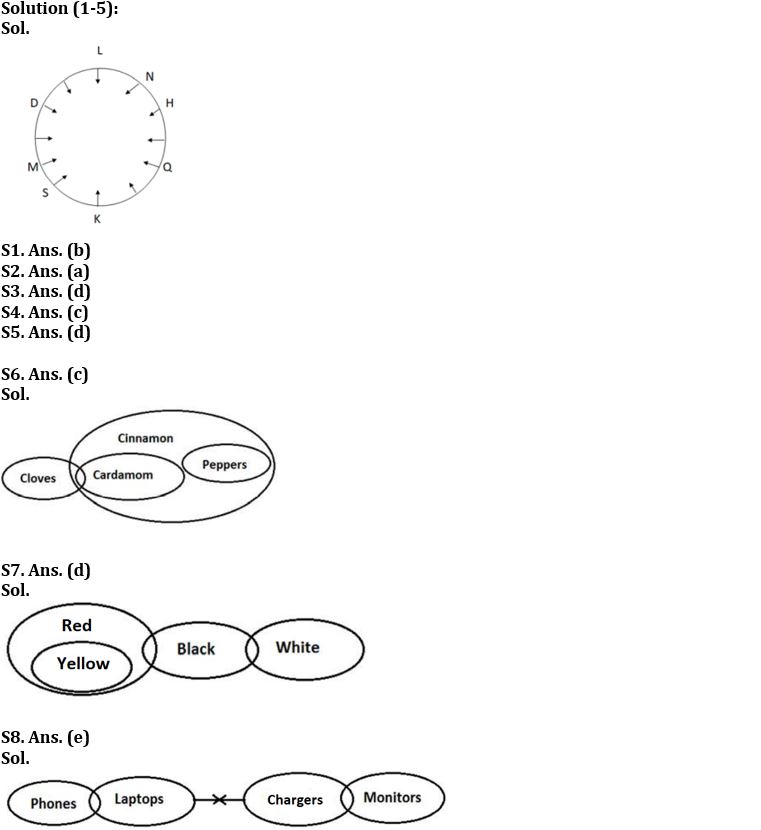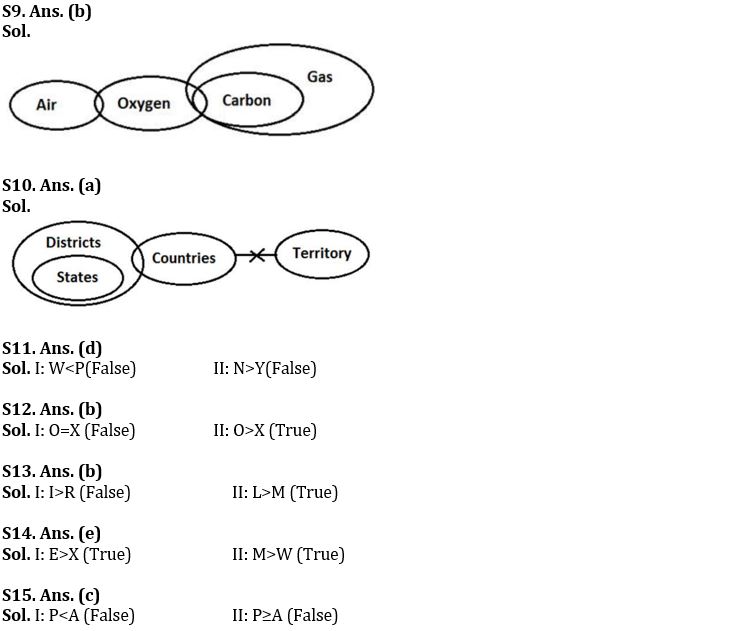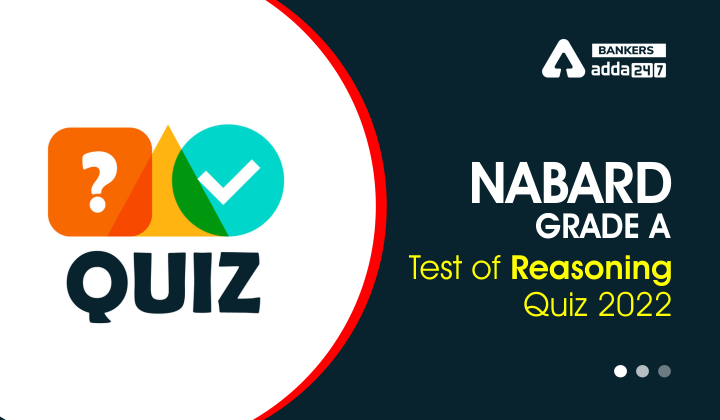Directions (1-5): Study the following data carefully and answer the questions accordingly.
A certain number of people are sitting around a circular table facing the center. S sits to the immediate left of K who sits opposite to L. More than ten and less than sixteen people are sitting in this arrangement. H sits fifth to the right of S. Three people are sitting between D and H. L and D are not immediate neighbors. Two people sit between N and D. Four people sit between M and N. Three people sit between Q and M.
Q1. How many people are sitting in this arrangement?
(a) 14
(b) 12
(c) 13
(d) 11
(e) None of these
Q2. Who sits opposite to N?
(a) S
(b) M
(c) Q
(d) D
(e) None of these
Q3. Who among the following is/are the immediate neighbors of L?
(a) Both Q and D
(b) H
(c) Both H and M
(d) N
(e) None of these
Q4. If C is an immediate neighbor of H, then which of the following is true regarding C?
(a) K is an immediate neighbor of C
(b) Four people are sitting between C and S
(c) L sits third to the right of C
(d) M and C are immediate neighbors
(e) All are correct
Q5. Four among the following five are same in a certain way and forms a group. Which among the following does not belong to the group?
(a) M, K
(b) H, Q
(c) Q, K
(d) N, H
(e) L, D
Direction (6-10): In the question below three statements are given followed by the conclusions. You have to take the given statements to be true even if they seem to be at variance with commonly known facts. Read all the conclusions and then decide which of the given conclusions logically follows from the given statements disregarding commonly known facts.
Q6. Statements: Only a few Cloves are Cardamom.
All Cardamom are Cinnamon.
All Peppers are Cinnamon.
Conclusion: I. Some Cinnamons are not Cloves.
II. All Cinnamons are Cloves
(a) Only I follows
(b) Only II follows
(c) Either I or II follows
(d) Neither I nor II follows
(e) Both I and II follow
Q7. Statements: All Yellow are Red.
Some Red are Black.
Only a few Black are White.
Conclusion: I. All Red are Black.
II. Only a few Red are Black.
(a) Only I follows
(b) Only II follows
(c) Either I or II follows
(d) Neither I nor II follows
(e) Both I and II follow
Q8. Statements: Only a few Phones are Laptops.
No Laptops are Chargers.
Only a few Chargers are Monitors.
Conclusions: I. Some Phones are not Chargers.
II. Some Monitors are not Laptops.
(a) Only I follows
(b) Only II follows
(c) Either I or II follows
(d) Neither I nor II follows
(e) Both I and II follow
Q9. Statements: Only a few Airs are Oxygens.
Only a few Oxygens are Carbons.
All Carbons are Gas.
Conclusion: I. Some Airs are not Gas.
II. Some Oxygens are not Carbons.
(a) Only I follows
(b) Only II follows
(c) Either I or II follows
(d) Neither I nor II follows
(e) Both I and II follow
Q10. Statements: All States are Districts.
Only a few Districts are Countries.
No Country is Territory.
Conclusions: I. Some Districts are not Territory
II. No States are Countries
(a) Only I follows
(b) Only II follows
(c) Either I or II follows
(d) Neither I nor II follows
(e) Both I and II follow
Directions (11-15): In these questions, relationship between different elements is shown in the statements. The statements are followed by two conclusions. Study the given conclusions and select the appropriate answer:
(a) If only conclusion I follows.
(b) If only conclusion II follows.
(c) If either conclusion I or II follows
(d) If neither conclusion I nor II follows.
(e) If both conclusions I and II follow.
Q11. Statements: W>T=Y<P≥F≥G=B<N
Conclusion I: W<P
II: N>Y
Q12. Statements: O≥ R>T=S=W≥Q=X≤Z
Conclusion I: O=X
II: O>X
Q13. Statements: I>U≤Y<L>R>W≥T=M
Conclusion I: I>R
II: L>M
Q14. Statements: X<Y= R<E≥W<P≤B<M
Conclusion I: E>X
II: M>W
Q15. Statements: A>Q ≤H=O≤W=F<P<G
Conclusion I: P<A
II: P≥A
Solutions







 GA Capsule for SBI Clerk Mains 2025, Dow...
GA Capsule for SBI Clerk Mains 2025, Dow...
 The Hindu Review October 2022: Download ...
The Hindu Review October 2022: Download ...
 Without These Documents, Your Bank Exam ...
Without These Documents, Your Bank Exam ...





